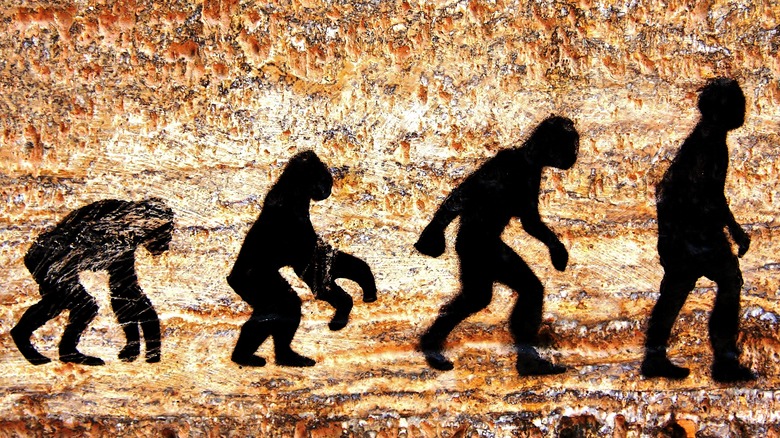Here's Why Humans Have Tailbones
Few areas on the body are more painful to bump than the tailbone. As you may know from experience, a bruised tailbone is more than just uncomfortable and can leave you waddling and wincing in pain for days following the injury. While a mild tailbone bruising can take up to four weeks to recover from, more severe injuries may require several months of healing time (via Healthline). How is it that so much care is required for this seemingly useless bone, and more importantly, why do we have it in the first place?
You've seen tails on birds, mammals, and reptiles alike. In the animal kingdom, tails are used for a variety of different purposes such as balance, warmth, and for signaling various messages to those around them (via Washington Post). In some species of monkeys, their tail can even be used as a means to grab, hold, and maneuver through their environment. But the last time we checked, we don't have tails anymore, right? Although humans no longer possess tails, our evolutionary ancestors once did.
Our ancestors originally had tails
Our evolutionary journey from our fish ancestors to primates illustrates both the development and loss of the tail (via Live Science). Having started with both a fin-like tail as well as a fleshy tail, fish that developed to survive both in water and on land eventually did away with the fin-like tail and instead maintained the more fleshy one. The tail was further lost as our primate ancestors began to stand upright and we moved from all fours to two-legged walking.
Nowadays, from an evolutionary standpoint, the tailbone is considered useless, or "vestigial" (via Spine Health). However, medical professionals stress that the tailbone, also referred to as the coccyx, is not entirely functionless. Located at the bottom of the spine, the coccyx is designed to help support our body weight while sitting.
Fascinatingly, the tailbone is not the only remnant of our tail-wielding days. During fetal development, a tail itself often emerges made up of muscle, tissues, and nerves (via WebMD). With the potential to be several centimeters in length, the growth of the human tail is short-lived and it regresses after about 8 weeks' time, leaving us simply with our tailbone.


